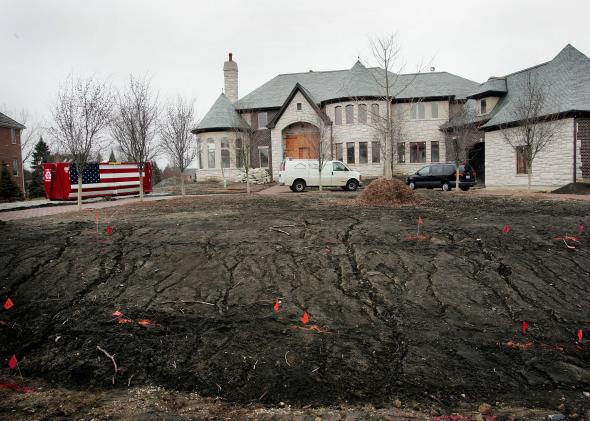When the English-language version of Thomas Piketty’s Capital in the Twenty-First Century drops, it’s going to be a big deal for the inequality debate. But the book is also just jampacked with fascinating historical facts that are interesting for a wide range of issues. And most of the data is up here for public consumption if you don’t mind reading a little French.
Here’s a chart I made that doesn’t appear in the book based on the data that is there. It aggregates the value of all residential housing in the United States of America as a share of annual national income:
There’s an interesting sawtooth pattern here, but basically it’s up, up, and away. National income is much higher in 2010 than it was in 1910 (the population has more than tripled in size and there’s been massive per capita growth), but the value of America’s housing stock has grown much faster than national income. What’s unfortunate is that we don’t seem to have a way to distinguish between the value of the land that the residential housing occupies and the value of the structures that have been built on the land.
One interesting point to note about this is that we have a lot of rules of thumb about what constitutes reasonable household-level spending on residential housing. Those are ideas about what rent-income ratio is “affordable” or what size mortgage it’s reasonable for a person to take out. The long-term view shows that in the real world residential housing has steadily become a bigger and bigger share of the economy and there’s probably no timeless wisdom you can exactly impart about it.
